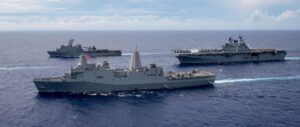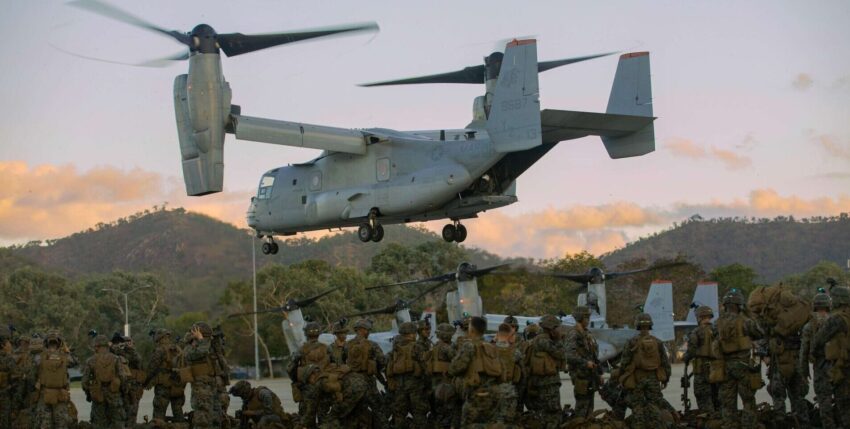From a report on the Bundeswehr portal
At the multinational large-scale manoeuvre "Talisman Sabre" From 22 July to 4 August, the sea battalion of the German Navy is also involved. Australia has hosted this largest joint training activity of its defence forces with the US military every two years since 2005.
Talisman Sabre 2023 is now the tenth and largest iteration of the manoeuvre series to date. More than 30,000 military personnel from 13 nations are taking part this year: in addition to the organisers Australia and the USA, these are Fiji, France, Indonesia, Japan, South Korea, New Zealand, Papua New Guinea, Tonga, Great Britain, Canada and Germany. The Philippines, Singapore and Thailand are sending observers to the exercise.
Another Indo-Pacific exercise for like-minded value partners
Talisman Sabre generally serves to support the respective armed forces in the planning and implementation of multinational (joint) and cross-force (combined) military operations. The series of manoeuvres aims to improve interoperability between the Australian and United States armed forces and other partner nations. As such, the large-scale exercise is intended to reflect the strength of Australia's alliance with the US as well as its commitment to working with like-minded partners in the region.
Talisman Sabre 2023 consists of partial exercises in designated manoeuvre areas, which include intensive training of ground troops as well as amphibious landings and air and naval warfare operations. As early as mid-July, the international troops moved into the Australian exercise areas, in some cases into large tent camps. The individual manoeuvre zones in the states Queensland and New South Wales are spread along the more than 3,500 kilometres of the east coast of the Australian mainland.

The German Navy's share of Talisman Sabre 2023
The German participation includes not only around 170 paratroopers from the army, but also a good 40 soldiers from the Sea Battalion. Its Coastal Operations Company provides a platoon of Marines who are deployed on board US landing ships in the 31st Airborne Division for an extended period of trainingst Marine Expeditionary Unit integrated.
The ships of the Expeditionary Strike Group Seven (ESG7), Expeditionary Battle Group Seven of the US 7th Fleet are responsible for amphibious operations in a wide range of scenarios. They range from humanitarian missions and disaster relief to full-scale combat operations.
Its units - a helicopter carrier and three dock landing ships - operate from the sea to deter any aggression with their presence. They can be mobilised immediately in the event of a crisis, conflict or natural disaster. The ships of ESG7 have unique capabilities and are therefore the most important prerequisite for US expeditionary operations. Marine Corps. Together, they work towards the land in order to be able to counter a potential opponent quickly and decisively if necessary.
The naval battalion practices co-operation with US Navy and US Marine Corps
"Our mission is immense, complex, challenging and occasionally dangerous," explains the commander of ESG7, Rear Admiral Derek A. Trinque, according to official website. "Ultimately, it's about maintaining peace and stability in the region and protecting our vital interests in the Pacific. In this endeavour, a flexible and powerful U.S. Navy amphibious force is constantly deployed, ready to meet any challenge or task our leadership can throw at it."
ESG7 is not stationed in the USA itself, but has its bases in Sasebo on the southernmost Japanese main island of Kyushu and in Okinawa. A quasi-organic part of ESG7 is the 31st Marine Expeditionary Unit, a mixed battalion-sized combat group with around 2,200 soldiers, including a component of tilt-rotor transport aircraft.










